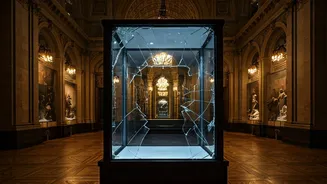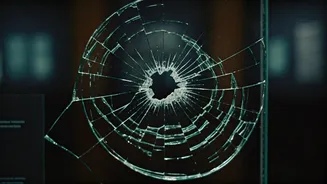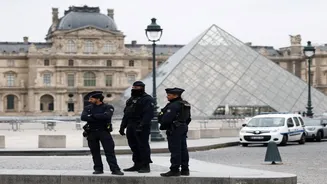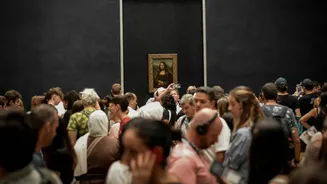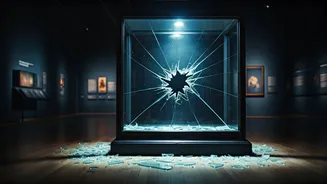A World-Shocking Heist
The Louvre Museum, a global icon, found itself at the center of an unwanted narrative – a theft. This event sent ripples of shock around the world, questioning
the very security of a place designed to safeguard priceless cultural artifacts. The heist served as a stark reminder of the vulnerability even institutions with the highest reputations can face. It wasn’t just the loss of items, but a blow to the museum's prestige and the trust placed in it by millions of visitors.
Security Failures Exposed
Following the heist, the museum's security protocols were placed under intense scrutiny. It quickly became apparent that there were serious lapses in the protective measures designed to keep the artifacts safe. Details about the weaknesses that allowed the theft to occur started emerging. The fact that such a well-guarded institution could be breached raised immediate questions about training, technology, and overall security strategy. These failures highlighted a significant gap between the expected and the actual levels of security at the Louvre.
Director's Offer to Resign
In the wake of the incident, the director of the Louvre publicly acknowledged the failures that led to the theft. This open admission came with an offer to resign, a move that demonstrated a sense of responsibility and accountability. The director's willingness to step down sent a clear message. The severity of the security breach was acknowledged, implying that those in charge of the museum understood the depth of the issues at hand. This act showed the gravity of the situation and the director's commitment to setting things right.
Reopening After Theft
Following the unsettling event, the Louvre reopened its doors to the public. The reopening served as a symbol of resilience, and it showed a determination to move forward. However, it also came with a renewed commitment to improving security measures. Visitors could, perhaps, see updated security elements during their visit. This also included the reassurance that the museum's valuable collection was once again under enhanced protection. The reopening marked the start of the museum's attempt to restore its reputation, and regain the public's confidence.
The Aftermath and Lessons
The events surrounding the theft at the Louvre provided many valuable lessons. The incident highlighted how important it is to continuously assess and improve security protocols at institutions that hold significant cultural assets. The event served as a wake-up call for museums around the world, underlining the need to invest in security and to remain vigilant against potential threats. This incident forced a reassessment of security practices and encouraged more proactive measures. It underscores the ongoing need to safeguard cultural heritage and to protect it for future generations.

